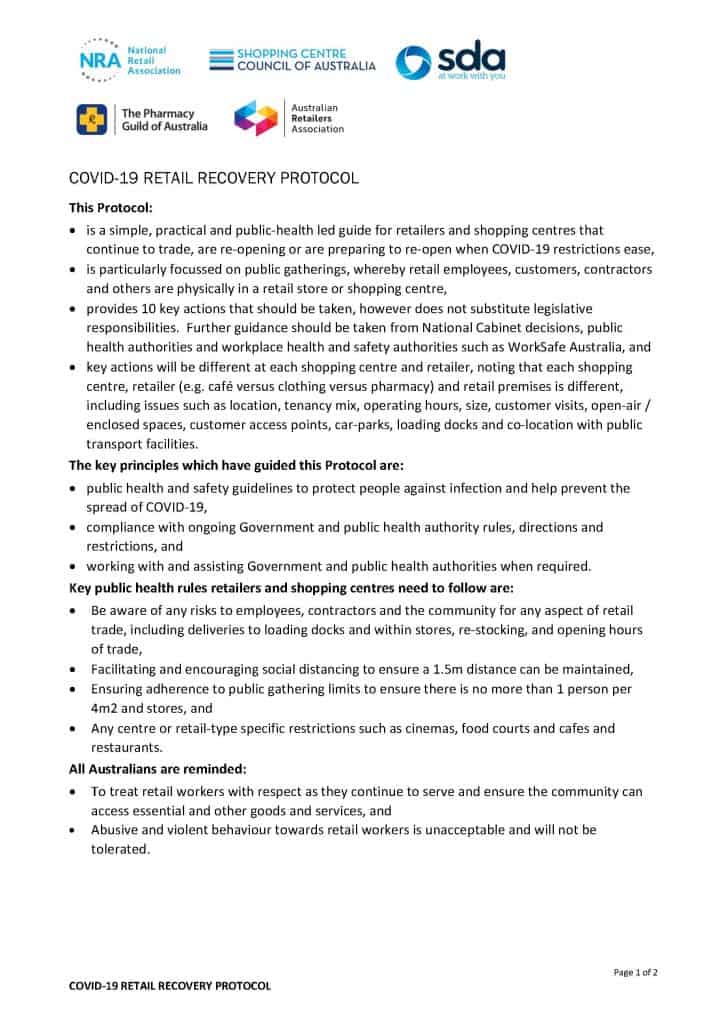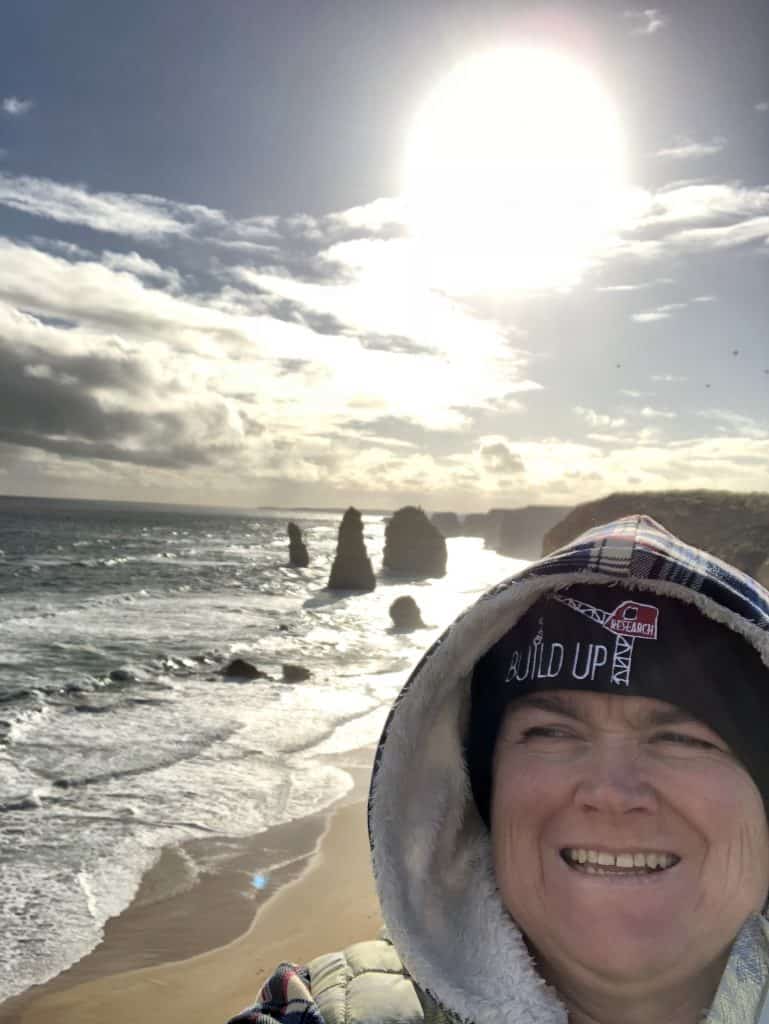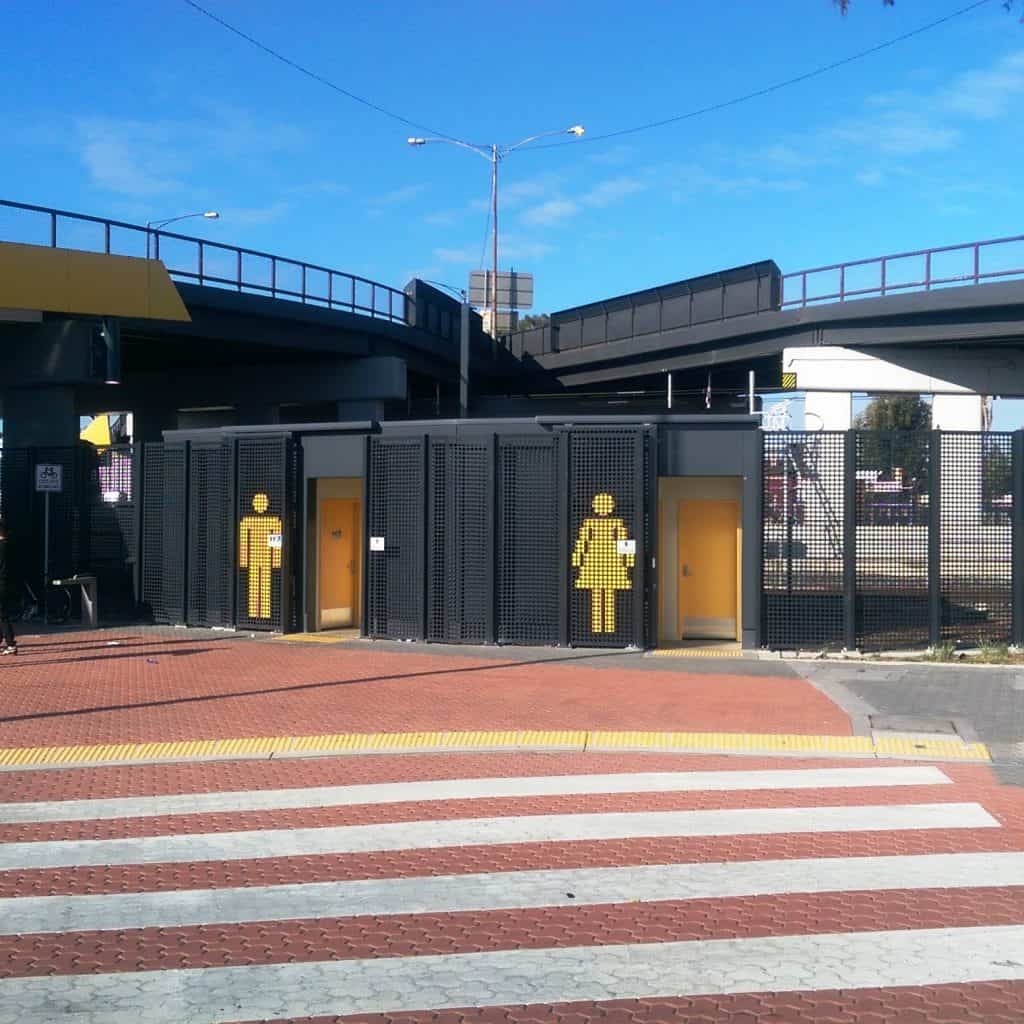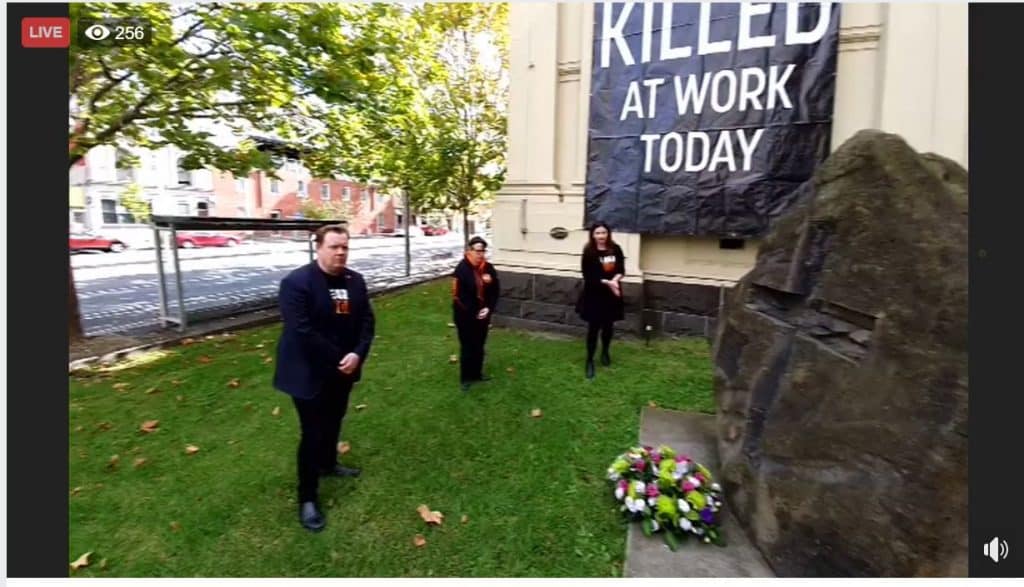
A group of retail associations in Australia has released a very curious COVID-19 Retail Recovery Protocol.
All shops and malls are workplaces and must comply with occupational health and safety (OHS) laws. A small embarrassment in these protocols is that although it acknowledges that further guidance may be available from workplace health and safety authorities, it provides no links to that COVID19 guidance and gets Safe Work Australia’s (SWA) name wrong! It does not inspire confidence and all that was needed was a single hyperlink to the SWA guidance developed specifically for the Retail Industry.





